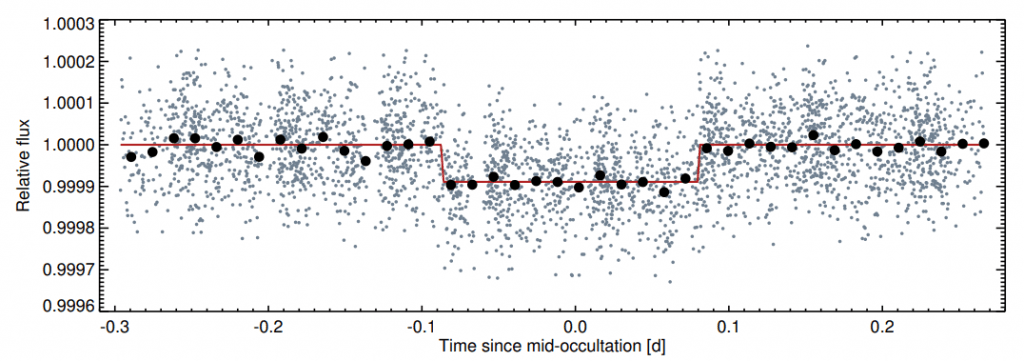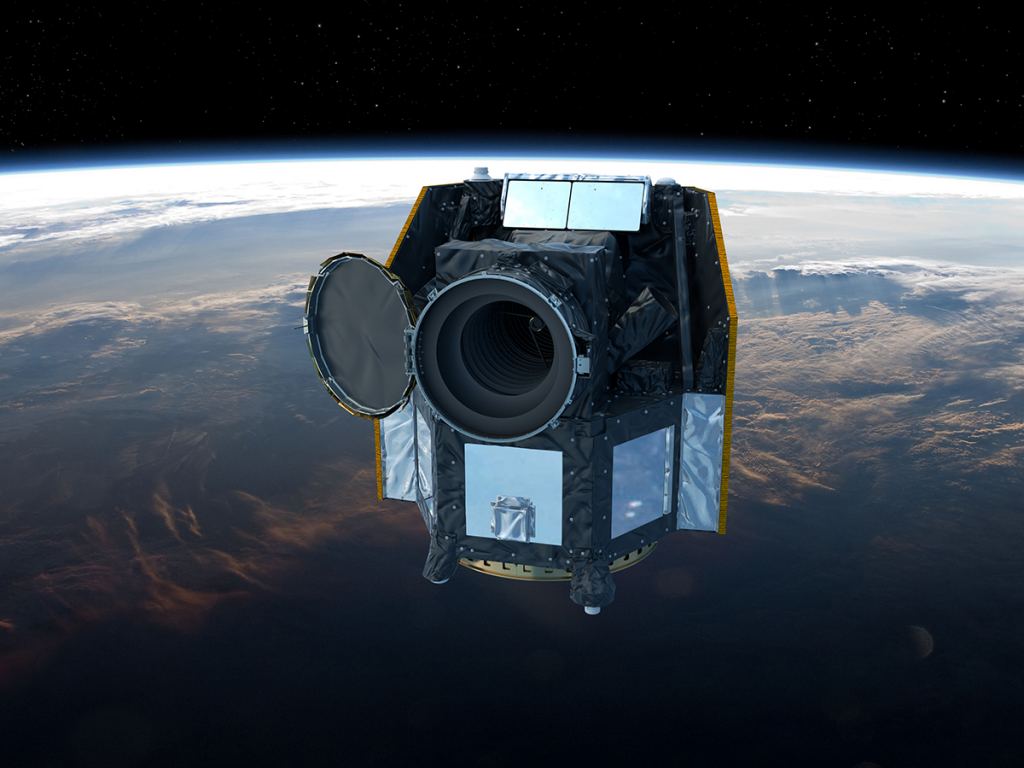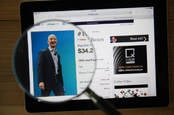
POSTED ON SEPTEMBER 30, 2020 BY EVAN GOUGH
The ESA’s CHEOPS (Characterizing Exoplanets Satellite) mission has announced its first discovery. It’s called WASP-189 b, and it’s a blistering hot temperature of 3,200 °C (5,790 °F), hotter than some stars. They’re calling the planet an “ultra-hot Jupiter.”
CHEOPS’ job is not to find exoplanets, but to find out more about exoplanets discovered by other missions like Kepler and TESS. CHEOPS is designed to examine known exoplanets orbiting bright, nearby stars. The goal is to determine the size of these planets, which will lead to a better understanding of their mass, composition, density, and formation. The mission was launched in December 2019, with a planned duration of 3.5 years.
“Cheops has a unique ‘follow-up’ role to play in studying such exoplanets.”Kate Isaak, Cheops project scientist at ESA.
The discovered details of WASP-189 b were announced in a new paper titled “The hot dayside and asymmetric transit of WASP-189 b seen by CHEOPS.” Lead author is Monika Lendl, of the University of Geneva. The paper is published in the journal Astronomy and Astrophysics.
CHEOPS’ power comes from its ultra-precise measurements of light as exoplanets orbit their stars. It features a cooled CCD inside the focal plane of the 32 cm (12.6 inch) Ritchey-Chretien telescope at the heart of the spacecraft. It’s especially efficient when looking at exoplanets in the super-Earth to Neptune mass range. (About 1 to 6 Earth radii.)
As an ultra-hot Jupiter, WASP-189 b is similar to our own Solar System’s gas giant, except that it orbits its star at a very close distance. The exoplanet is orbiting its star 20 times closer than Earth is orbiting the Sun. This heats the planet to such extreme temperatures.

“Only a handful of planets are known to exist around stars this hot, and this system is by far the brightest,” said lead author Lendl in a press release. “WASP-189b is also the brightest hot Jupiter that we can observe as it passes in front of or behind its star, making the whole system really intriguing.”
The planet is so bright that its light can still be seen, even when occulted by its star. “As the planet is so bright, there is actually a noticeable dip in the light we see coming from the system as it briefly slips out of view,” explained Lendl. “We used this to measure the planet’s brightness and constrain its temperature to a scorching 3200 degrees C.”

This extreme planet is nothing like our own Solar System, though in the past Jupiter was likely much closer to the Sun than it is now. The grand tack hypothesis says that Jupiter migrated as close as 1.5 AU from the Sun. But even though that’s a lot closer than Jupiter’s current 5.2 AU orbit, it’s nowhere near as close as WASP-189 b is to its host star.
The planet is so hot that it’s impossible to really imagine. It’s hot enough not only to melt iron, but to turn it into a gas. So unless some organism has figured out how to breathe iron, there’s no chance of habitability on something so hot.
After watching the planet as it passed behind its star, CHEOPS watched as the two traded places, and WASP-189 b transited in front of its host star. Exoplanet transits are a rich source of information. The team of researchers learned a lot about the shape, the size, and the orbital characteristics of the planet during its transit. They learned that WASP-189 b is actually larger than thought: its radius is almost 1.6 times greater than Jupiter’s.
But it’s not just the unusual characteristics of the planet that’s generating interest. The host star itself is also unusual.
“It’s spinning around so fast that it’s being pulled outwards at its equator!”Lead Author Monika Lendl
“We also saw that the star itself is interesting – it’s not perfectly round, but larger and cooler at its equator than at the poles, making the poles of the star appear brighter,” said Lendl. “It’s spinning around so fast that it’s being pulled outwards at its equator! Adding to this asymmetry is the fact that WASP-189 b’s orbit is inclined; it doesn’t travel around the equator, but passes close to the star’s poles.”
That tilted orbit hints at a chaotic past, just as Uranus’ does in our own Solar System. Uranus is tilted sideways compared to other planets, and that’s probably the result of an ancient collision with another protoplanet in the early, formative years of the Solar System.
There’s no certainty around what might have caused WASP-189 b’s orbital inclination, but it’s part of the mystery surrounding the formation of hot and ultra-hot Jupiters.
“As we measured such a tilt with Cheops, this suggests that WASP-189 b has undergone such interactions in the past,” added lead author Lendl, referencing how planets jostle for position in a young solar system, or how interactions with other stars could cause planets to tilt.

Astronomers are rightly excited about this first result from CHEOPS. There are so many questions about exoplanets, and planetary scientists are pursuing multiple, fruitful lines of inquiry into exoplanets. “This first result from Cheops is hugely exciting: it is early definitive evidence that the mission is living up to its promise in terms of precision and performance,” said Kate Isaak, Cheops project scientist at ESA.
In their paper, the authors are also similarly complimentary to the spacecraft’s power and precision. “These observations showcase the capability of CHEOPS to detect shallow signals with an extremely high level of precision, thereby illustrating the potential of future studies of exoplanet atmospheres with CHEOPS.”
The catalogue of exoplanets keeps growing; we know of thousands of them now, and there’s no reason to believe we won’t keep finding them around most stars. While TESS is still operating and scientists are finding more planets in its data, it’s up to CHEOPS to tell us more about those planets.
“Cheops has a unique ‘follow-up’ role to play in studying such exoplanets,” added Isaak. “It will search for transits of planets that have been discovered from the ground, and, where possible, will more precisely measure the sizes of planets already known to transit their host stars. By tracking exoplanets on their orbits with Cheops, we can make a first-step characterisation of their atmospheres and determine the presence and properties of any clouds present.”
“For the most favourable objects, CHEOPS will conduct phase curve observations, revealing the longitudinal cloud distribution in the planets’ atmosphere,” the study says. CHEOPS also has the mission flexibility to examine exoplanets across a wide swathe of the sky, meaning it can spend its time on the most promising exoplanets. This separates it from a planet-hunting mission like Kepler, which remained focused on one patch of sky, looking for evidence of planetary transits.
The CHEOPS mission is the first of three missions that the ESA is planning to advance our understanding of exoplanets. The other two are PLATO (PLAnetary Transits and Oscillations of stars) and ARIEL (Atmospheric Remote-sensing Infrared Exoplanet Large-survey.) Those missions are a few years away, but they hold a great deal of promise. For the moment, it’s up to CHEOPS.
“Cheops will not only deepen our understanding of exoplanets,” said Isaak, “but also that of our own planet, Solar System, and the wider cosmic environment.”
More:
Universe Today: Here are the First Pictures from CHEOPS







